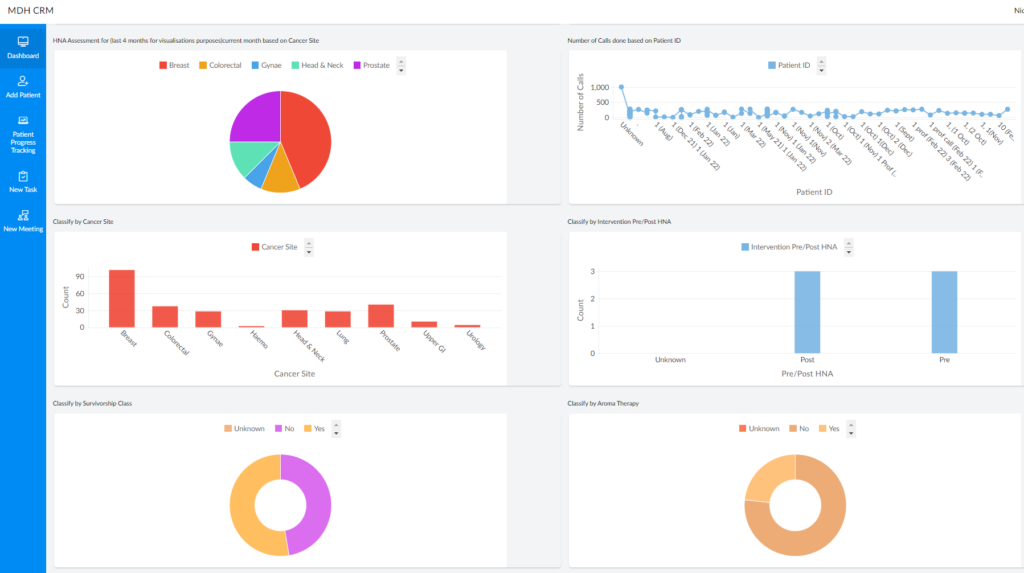The demand for outpatient services at Mater Dei Hospital (MDH) has been on the rise in recent years. This gives rise to a number of issues, which in turn could lead to inefficiencies in departments. Consequently, healthcare services have undergone major changes at an increasing rate. Moreover, the rate of change in healthcare systems is expected to accelerate further as both patients and professionals incorporate technology into their procedures.
The case study chosen for this project concerns the current challenges faced by staff at MDH in tracking patient readmission, due to the way information is recorded, which has been hindering them from being able to make better-informed assumptions. Hence, the goal of this research was to examine clinical processes, and create a simplified customer relationship management (CRM) system that would incorporate a dashboard facilitating the clinical process and the visualisation of data. Additionally, prediction algorithms would be used to calculate the likelihood of patient readmission, in order to obtain better insight, and thus plan more efficiently.
In brief, the project relied primarily on CRM and machine learning. The CRM incorporated the functions mainly used in the clinical processes, as well as being designed to provide relevant data in an effective format and to aid clinic analysis and patient progress. Furthermore, using an external dataset, prediction algorithms were used to calculate the possibility of a patient being readmitted to the hospital, allowing for more efficient resource scheduling.
As at the time of undertaking the project, the available data at Sir Anthony Mamo Oncology Centre (SAMOC) at MDH did not offer any indication as to whether a patient might be readmitted into hospital.
As a result, various issues could arise in the process of planning resources and scheduling appointments. The prediction algorithm being proposed would allow clinicians to prepare for future appointments by determining which patients would be likely to be readmitted and, consequently, be in a better position to schedule resources efficiently. Furthermore, a CRM dashboard displaying useful data, such as the one being proposed, would assist clinicians in understanding the state of the clinic and patient throughput details. The clinicians could use these patient demographics to help them develop criteria for incoming readmissions, as well as facilitating data visualisation and comprehension.
Meetings with domain experts within the survivorship team at SAMOC were held to gather requirements. A meeting was scheduled with the team members to discuss clinical practices, current challenges, data aspects that would be best visualised in dashboards in detail, and any clinic processes that would best be included within the functionality of the CRM. A usability study with various respondents was implemented to gain feedback on the CRM, its functionality, and design.
Since the platforms currently used, Microsoft Teams and Mosaic, did not record the necessary amount of clinical data, an external dataset was required for the purposes of applying the prediction models. On the unknown data, the performance of these prediction models was very good, with the random forest model presenting the best performance. Hence, it could be considered as a solution to patient readmission in the outpatient setting. If MDHs’ current systems collected more data about clinics, this study could have been more practical and applicable.

Course: B.Sc. IT (Hons.) Computing and Business
Supervisor: Dr Conrad Attard
